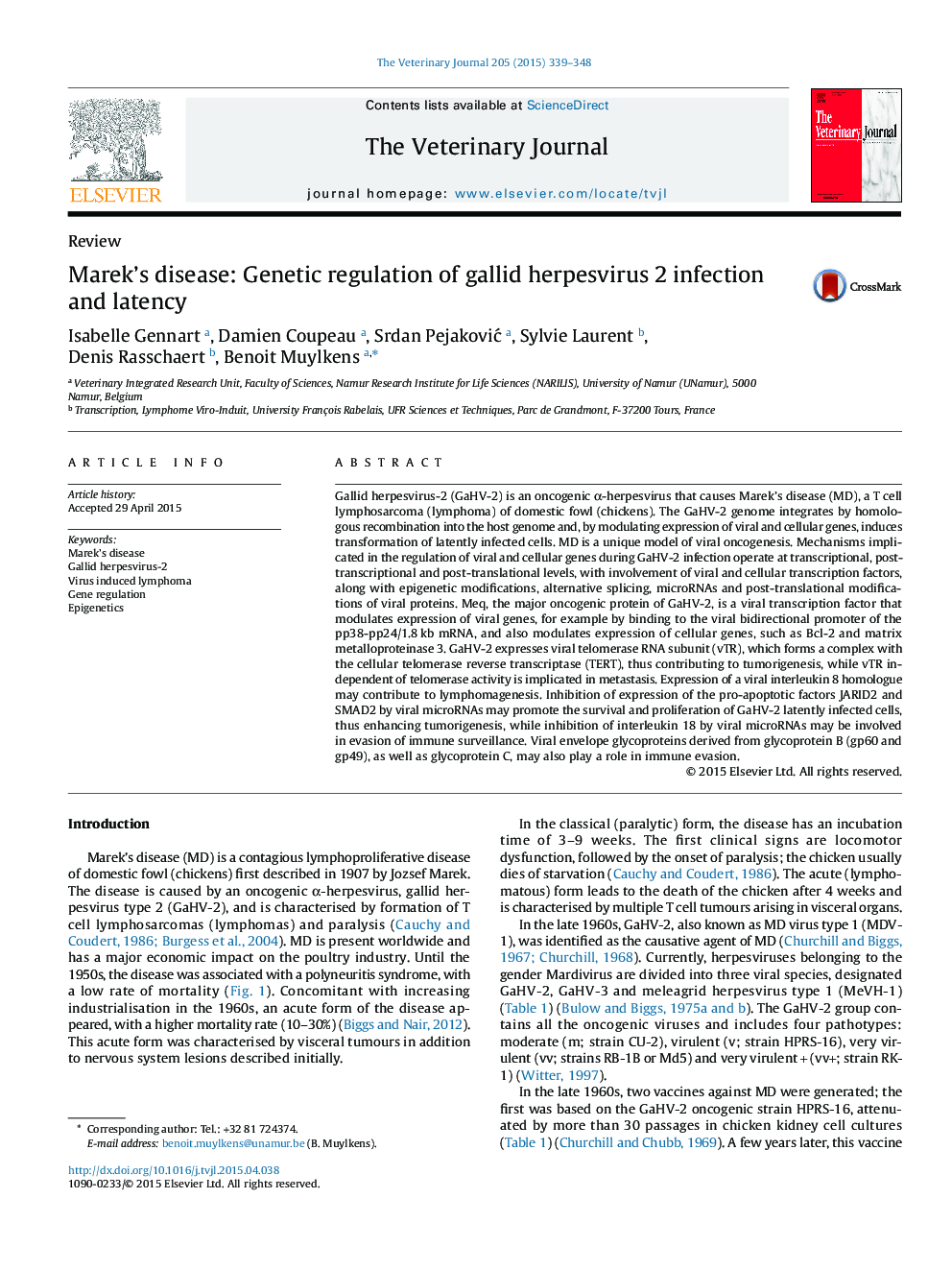| کد مقاله | کد نشریه | سال انتشار | مقاله انگلیسی | نسخه تمام متن |
|---|---|---|---|---|
| 2463873 | 1111763 | 2015 | 10 صفحه PDF | دانلود رایگان |
• Gallid herpesvirus 2 (GaHV-2) induces Marek's disease, a lymphosarcoma with a major economic impact on the poultry industry.
• GaHV-2 alters transcription, splicing and post-translational modifications in latency and tumorigenesis.
• Further studies are needed to understand how this oncogenic herpesvirus interacts with the host cell to induce cancer.
• This review updates the mechanisms involved in the regulation of viral and cellular genes during GaHV-2 infection.
Gallid herpesvirus-2 (GaHV-2) is an oncogenic α-herpesvirus that causes Marek's disease (MD), a T cell lymphosarcoma (lymphoma) of domestic fowl (chickens). The GaHV-2 genome integrates by homologous recombination into the host genome and, by modulating expression of viral and cellular genes, induces transformation of latently infected cells. MD is a unique model of viral oncogenesis. Mechanisms implicated in the regulation of viral and cellular genes during GaHV-2 infection operate at transcriptional, post-transcriptional and post-translational levels, with involvement of viral and cellular transcription factors, along with epigenetic modifications, alternative splicing, microRNAs and post-translational modifications of viral proteins. Meq, the major oncogenic protein of GaHV-2, is a viral transcription factor that modulates expression of viral genes, for example by binding to the viral bidirectional promoter of the pp38-pp24/1.8 kb mRNA, and also modulates expression of cellular genes, such as Bcl-2 and matrix metalloproteinase 3. GaHV-2 expresses viral telomerase RNA subunit (vTR), which forms a complex with the cellular telomerase reverse transcriptase (TERT), thus contributing to tumorigenesis, while vTR independent of telomerase activity is implicated in metastasis. Expression of a viral interleukin 8 homologue may contribute to lymphomagenesis. Inhibition of expression of the pro-apoptotic factors JARID2 and SMAD2 by viral microRNAs may promote the survival and proliferation of GaHV-2 latently infected cells, thus enhancing tumorigenesis, while inhibition of interleukin 18 by viral microRNAs may be involved in evasion of immune surveillance. Viral envelope glycoproteins derived from glycoprotein B (gp60 and gp49), as well as glycoprotein C, may also play a role in immune evasion.
Journal: The Veterinary Journal - Volume 205, Issue 3, September 2015, Pages 339–348
